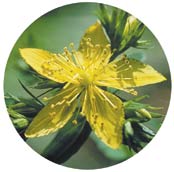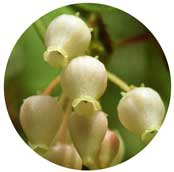Botanical Plant Study
The Twelve Windows of Plant Perception
By Richard Katz and Patricia Kaminski
Overview:
Flower essence therapy involves the healing of the human soul through the use of potentized substances made from flowers. Flower essences have the unique ability to address mental and emotional levels of imbalance within the soul, and they are generally described and selected according to these more subtle qualities. Although flower essences have trans-physical attributes, we can come to know and appreciate these subtle healing aspects by training our senses and thinking capacities when beholding plants. By consciously extending and refining what we take in with our senses, we can cross the boundary of the physical world of plants and enter into the higher dimensions of plant life. Such research work forms the basis for understanding flower essence qualities and how they work within the human soul. The ability to hone our perception of plants creates a deep receptivity within the soul — an imaginal field of sensitive awareness — for encountering and being healed by the plant essences that we use for ourselves or select for others.
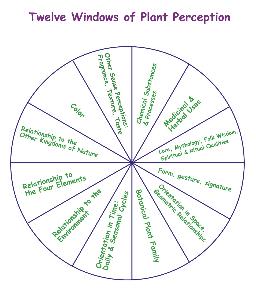 Through our research in the Flower Essence Society, we have identified twelve major windows of perception for viewing plant qualities. Each of these windows yields a different dimension of information about a plant, and yet the wisdom we seek is greater than an aggregate listing of all of these perspectives. We must "re-vision" and "re-view" these various insights as a living whole in order to appreciate the essential meaning of any given plant.
Through our research in the Flower Essence Society, we have identified twelve major windows of perception for viewing plant qualities. Each of these windows yields a different dimension of information about a plant, and yet the wisdom we seek is greater than an aggregate listing of all of these perspectives. We must "re-vision" and "re-view" these various insights as a living whole in order to appreciate the essential meaning of any given plant.The twelve windows are not mutually exclusive divisions. Rather, these windows operate as a kaleidoscope, each perspective unique, yet with shifting colors and overlapping structures related to, and built from, each other. For any particular plant some of the windows will be more significant; while others will yield comparatively little insight. However, it is only by systematically considering a plant from a full spectrum of perspectives that we can hope to gain true insight into its subtle characteristics.
1. Form and Gesture
These qualities of plants become especially perceptible when we attempt to sketch them. If we try to carefully draw each part of the plant, it can be a frustrating and tedious experience. But with mindful attention, a moment dawns when we "see" the essential gesture of a plant — for instance the way the pine tree ascends upward in a conical shape, reflected not only in the tree as a whole but in the way each cluster of needles organizes itself, and in the forming of each pine cone. When we capture the "signature" of a plant, our drawing becomes much more fluid and alive for we have entered into the psychic space of the plant, and we share communion with it.
There are countless forms and gestures that we can recognize in each part of the plant from root to stem and leaf, and in the flower and fruit. We can begin with rudimentary distinctions that will become richer as we attend to our perceptions. Especially valuable to consider are the three essential flower-forms, deemed important by medieval alchemists. These forms epitomize the plant's bridge-making capacities between sun and earth: the cosmic, the soulful and the earthward.
|
|
|
| a) Star St. John's Wort | b) Cup Calendula | c) Bell Manzanita |
a) Star - These forms radiate outward, with well-defined symmetry and geometry. As a whole they are more "cosmic" in orientation. Generally speaking, star forms in flowers uplift the consciousness, bestowing light, harmony and synthesis. Most star forms speak to the spiritual and mental aspects of the soul life.
b) Cup - These forms have soft curves and create inner spaces, or chalices within the flower. While their essential gesture is upward, it is as though they are taking in light, creating a container for soul experience. Cup-like forms in flowers heal the most basic issues of the soul life, and help to expand the potential of the soul to know itself. They evoke sensitive awareness of the inmost qualities of the soul life, such as heartfelt feelings of love and nurturance.
c) Bell - These forms are more contracted and point downward to the earth. Many plant essences made from these flowers address soul issues that are more directly related to the bodily organs, or primal emotions that are stored within the cellular structures of the body. Many of the bell-shaped flowers are cathartic, stimulating, or grounding. They help the soul to incorporate the physical dimension of life with more conscious awareness.
There are many variations on these three archetypes, as well as numerous other ways to observe form and gesture. This first window is so primary, that many of the additional windows of perception discussed below are fundamentally related to it. Our imaginal work enables us to ultimately perceive the plant's gestalt or form-pattern, the manner in which etheric formative forces actively create its unique identity.
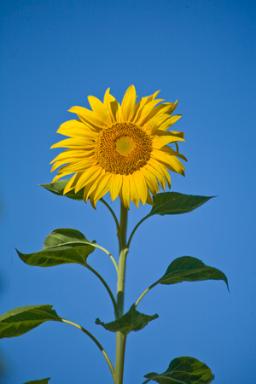 2. Orientation in Space, Geometric Relationships
2. Orientation in Space, Geometric Relationships
One important aspect of a plant's formative gesture is its orientation in space. For example, the vertical gesture of the Sunflower or Mullein impart individualizing qualities. Plants that grow on a horizontal axis, such as those that spread lengthwise on the earth or those that grow as vines often contain healing qualities related to the social dimension — how the "I" relates to others, such as Vine or Sweet Pea. Spreading plants that do not grow vertically, but embrace the earth like the Violet or Lady's Mantle address soul qualities of humility, inclusiveness or the absorption of the individualidentity in the larger collective.

Another aspect of spatial relationship is the geometric structure of the plant, in particular the flower. For example, Rose Family flowers are five-pointed stars, a signature of incarnation, whereas Lily Family flowers are six-pointed stars, a signature of cosmic harmony.
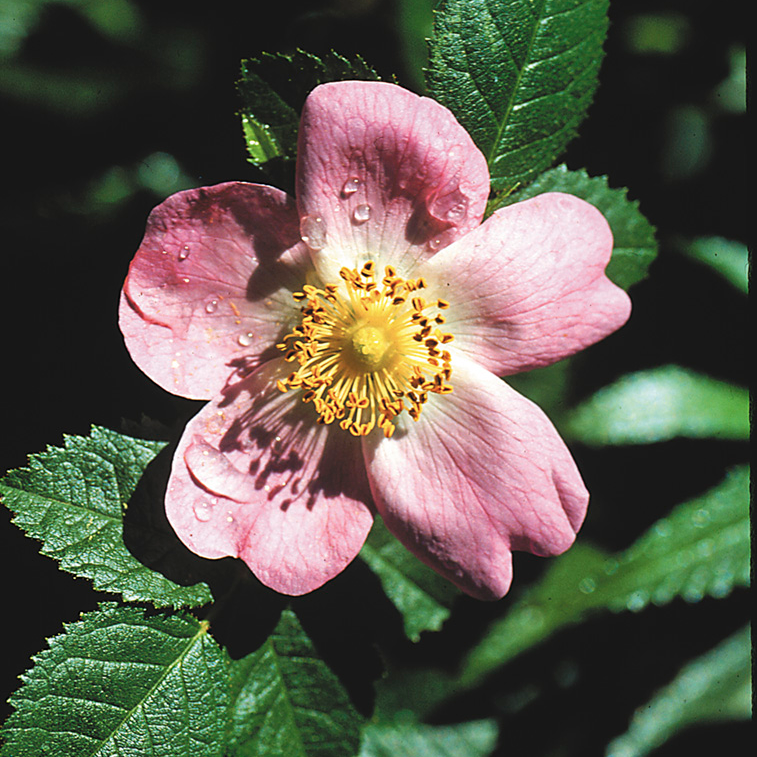 Rose Family: California Wild Rose | 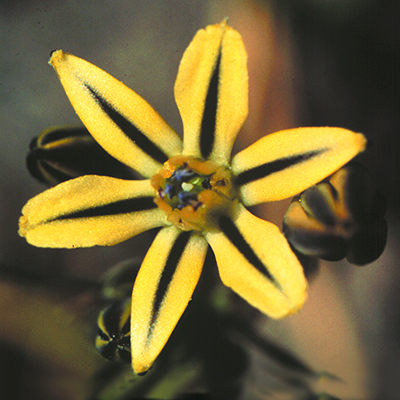 Lily Family: Pretty Face |
3. Botanical Plant Family
Once we have mastered the foundational perceptions belonging to plant forms and orientation in space, the system of botanical classification of plants can serve as a more precise method for the study of plant morphology. The hierarchical arrangement of plants in orders, families, genera and species is more than a handy system of nomenclature. Modern botany has taken up genetic analysis as a basis for classification. Yet most plant classification is still derived from the classical method, which has been based, in principle — and mostly in practice — on the form of the plant. In particular, the reproductive parts of the plant — the flower and fruit/seed — have been determinative of a botanical classification, but other considerations such as leaf form, phylotaxis (leaf arrangement on the stem), and growth habit have been considered. While most botanists have lacked a conscious perception of the etheric formative forces, we can gain much from their detailed and accurate observation of plant forms. It then becomes our task to extend the richness of these sense perceptions through imagination, inspiration, and ultimately, intuition.
In our research through the Flower Essence Society, we have found that knowing the botanical plant family of a plant is an important key to understanding its properties when prepared as a flower essence. In this work, we can make use of all the other windows of plant perception. The botanical "window" gives us an organizing tool for seeing relationships among plants. Plant families are a broad enough group that we can study many different examples within each family, and note both the common themes, and the range of variation.
For example, within the Lily Family (Liliaceae) we find plants with watery bulbs, poorly rooted, with simple linear leaves, and star-like flowers with geometries of threes and sixes. These plants evoke the watery womb origins of life, and a cosmic harmony that has only begun to incarnate into life. Yet, there is also much variation within the lilies. The fiercely colored Tiger Lily is orange with dark spots, and has downward-pointing flowers with recurved petals. It has a much more active and earthy gesture than, for example, the Mariposa Lily, with its creamy-white, bowl-shaped flowers that hover above the earth like the butterfly for which it is named.
Besides the familial relationship, we can also examine the more closely related species within a particular genus, especially when a number of these are used as flower essences. For example, Star Tulip, Yellow Star Tulip, Fairy Lantern and Mariposa Lily are all species in the Calochortus genus, and all deal with various aspects of the receptivity of the soul. The range of essences from the Mimulus (Monkeyflower) genus are all variations on the theme of primal life forces and the soul's struggle with fear or repression of them.
4. Orientation in Time: Daily and Seasonal Cycles
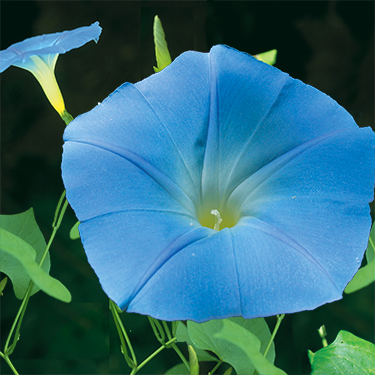 Morning Glory | 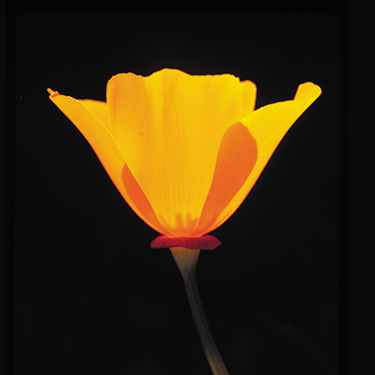 California Poppy |
Plants are not static beings; they must be observed through cycles of time in order for their individual natures to be revealed. We can ask why it is that the Morning Glory is open in the early morning and closes as the day progresses, whereas the California Poppy is curled shut in the morning, and unfurls its glory as the sun intensifies during the day. Why does the Evening Primrose respond predominantly to the light of the moon, as does the Nicotiana, which sends its fragrance forth at night? Besides the diurnal rhythm, we can also examine the yearly seasonal rhythm. It is in the nature of a Dandelion to burst forth in blossom in the early Spring, whereas the Chrysanthemum holds back until the end of summer or early autumn to reveal its flower. What does this reveal about the soul qualities of each of these plants?
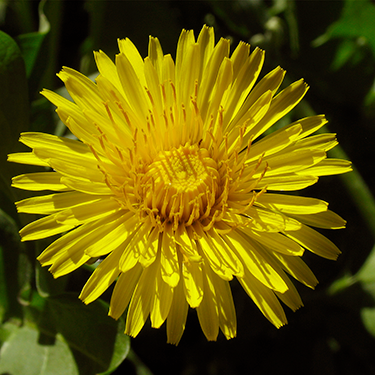 Dandelion | 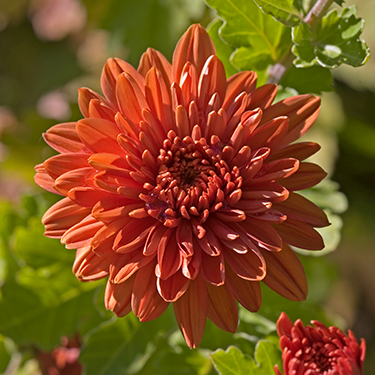 Chrysanthemum |
Additionally, there is the life cycle of the plant itself. Annuals live only during a portion of the year that is favorable to their growth, and then their life forces disappear into the seed until favorable conditions arise once again. Perennials may rest during part of the year, but their essential structure endures from year to year. Some, like the redwoods and olive trees, may live for centuries, which expresses much of their qualities of strength and endurance. We can also consider the evergreen trees, which are less subject to the seasonal rhythms than the deciduous trees. What message does the dark, somber Pine impart with its evergreen mantle and towering form in the winter landscape, in contrast to the Willow that "springs" forth with its catkins and supple limbs at Easter-time?
5. Relationship to the Environment
The place where a plant chooses to grow reveals much about its qualities. Wild plants will flourish where they find conditions that support and respond to their essential nature. We find the Sagebrush in the barren simplicity of the desert. It is a cleansing, purifying plant. We find the Penstemon (Penstemon davidsonii) in the harsh alpine regions above the tree-line. It is the essence for gaining inner strength through adversity.
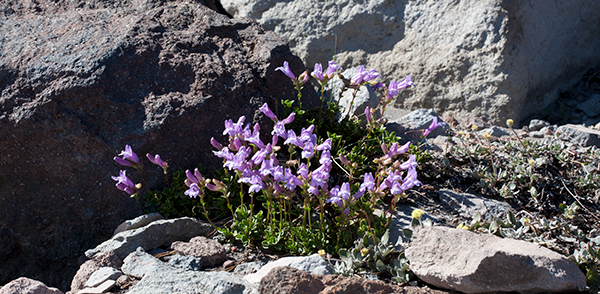
Penstemon
When we work with garden plants, it is important to consider where such plants first originated on earth. For example, knowing that the lavender and rosemary in our garden flourish in the hot, dry Mediterranean summers tells us of their affinity for light and warmth.
6. Relationship to the Four Elements
Plants live not only in a physical environment, but also in one of elemental and etheric forces. The elements as developed by the Greeks are not the molecular "building blocks" of the modern periodic table. Rather, they are archetypal qualities of substances. Earth is solidity; water is fluidity; air is expansiveness; and fire is transformation.
Frequently two elements are predominant in a plant, expressing a polarity, while the other two are less apparent. For example, the Queen Anne's Lace (wild carrot) shows a strong earth gesture in its tap root, and an airy quality in its finely divided leaves and flowers. As a flower essence it works with the integration of the second and sixth chakras, harmonizing sexual and psychic energies.
Aloe Vera, by contrast has a strong relationship to fire, evidenced in its hot, dry environment; and water, as evidenced by the moist gel of its succulent leaves. These leaves are a well-known remedy for soothing burns, and the flower essence is rejuvenating for states of exhaustion and "burn-out" due to excessive choleric drive.
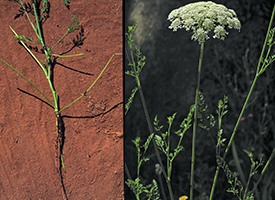 Queen Anne's Lace | 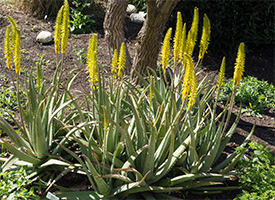 Aloe Vera |
7. Relationship to the Other Kingdoms of Nature
The Plant Kingdom coexists with the other three Nature Kingdoms: the Mineral, Animal and Human. The quality of a plant species' relationship to one or more of these kingdoms is an important expression of its inherent character. For example, the Glassy Hyacinth has a special relationship to the Mineral Kingdom, in that it grows only on the thin soil covering dark, volcanic rock. Its essence has much to do with deep transformation and upheaval in the soul.
Many plants have a special relationship to the Animal Kingdom through pollination by insects or birds. For example, the Milkweed is pollinated by the Monarch butterfly, with which it has a close symbiotic relationship. The butterfly, through its contact with the alkaloids of the Milkweed sap, becomes toxic to its predators. The Milkweed flower essence helps the soul arise from a state of passivity and dormancy (chrysalis-like) and rise on its own wings. The California Pitcher Plant has a rather unusual relationship to insects - it digests them. This carnivorous plant yields a flower essence that helps our astrality to take hold of the physical world, through digestion and other means.
 Glassy Hyacinth | 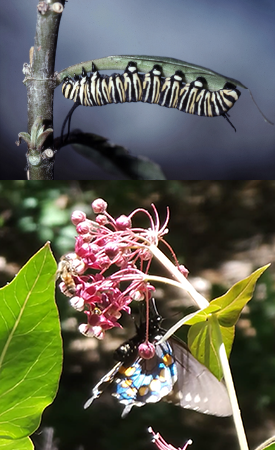 Caterpillar and Butterfly on Milkweed |
Human beings have had an impact on almost all of the Plant Kingdom, and we have developed plants for our needs for much of human history. Certain plants have flourished in a close co-creative relationship with the Human Kingdom, and this history must be considered to understand their properties. For example the corn (maize) plant has developed over several millennia as the sacred plant of the Native American peoples. Its origins in the wild as a diminutive grass-like plant in Mexico are nearly lost in antiquity. The fertile, robust corn plant that we know today radiates a healing quality that lives deep in the Native American culture, the ability of the human soul to feel nourished and connected with the sacred Earth. It is for this reason that we can use the corn flower essence for those modern souls who are often distressed and disoriented by urban and technological life and can no longer feel such soul communion with the Earth.
Corn
8. Color
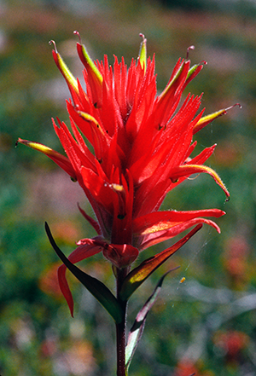 What is the language of color within the plant? The most obvious display occurs in the blossom when cosmic astral forces briefly penetrate into the plant. Yet many plants display unusual color characteristics such as the Love-Lies-Bleeding with its red color penetrating right into the root, stem and leaf, or the Indian Paintbrush (pictured) with its flame-red bracts. Subtle color variations work in the bark and stem of the plant, and even the seemingly ubiquitous green mantle of the plant world is diversely expressive, from the soft, silvery greens of the Sagebrush and Mugwort, the subtle gray-green of the Olive, the penumbral greens of the conifers, or the bright emerald-greens of the summertime annuals.
What is the language of color within the plant? The most obvious display occurs in the blossom when cosmic astral forces briefly penetrate into the plant. Yet many plants display unusual color characteristics such as the Love-Lies-Bleeding with its red color penetrating right into the root, stem and leaf, or the Indian Paintbrush (pictured) with its flame-red bracts. Subtle color variations work in the bark and stem of the plant, and even the seemingly ubiquitous green mantle of the plant world is diversely expressive, from the soft, silvery greens of the Sagebrush and Mugwort, the subtle gray-green of the Olive, the penumbral greens of the conifers, or the bright emerald-greens of the summertime annuals.
The language of color tells us so much about the soul qualities of a plant. For instance why do many of the yellow blooming plants like Scotch Broom, Mustard and St. John's Wort address a depressive state of consciousness? Can we understand the nature of yellow, its expansive qualities and its ability to break through darkness? On the other hand can we note the vitalizing and energizing qualities of red and orange flowers like Nasturtium, Zinnia or Indian Paintbrush?
9. Other Sense Perceptions: Fragrance, Texture, Taste
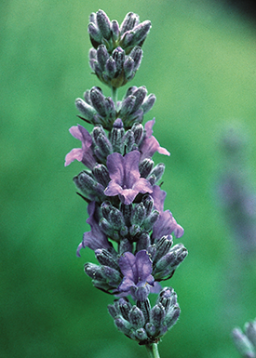 All sensory experiences can be important pathways for knowing a plant. Three that are of particular importance are fragrance, texture and taste. What is the soul impression received from lilies with their other-worldly fragrances that are so sweet and at times overwhelming? How does this contrast with the pungent, fiery aromas of the mint family like Lavender (pictured) or Rosemary? And what about the delicate, ethereal fragrance of the Wild Rose or the Cherry blossom? Can we follow what happens in our souls when we experience these different aromas, how some take us out of ourselves and others bring us more in? Why is that? And what about plants that display no fragrance or very little?
All sensory experiences can be important pathways for knowing a plant. Three that are of particular importance are fragrance, texture and taste. What is the soul impression received from lilies with their other-worldly fragrances that are so sweet and at times overwhelming? How does this contrast with the pungent, fiery aromas of the mint family like Lavender (pictured) or Rosemary? And what about the delicate, ethereal fragrance of the Wild Rose or the Cherry blossom? Can we follow what happens in our souls when we experience these different aromas, how some take us out of ourselves and others bring us more in? Why is that? And what about plants that display no fragrance or very little?
The textures of plants are important. Consider the thistles or many plants in the rose family with thorns that afflict the skin, as opposed to the silky smoothness of the Mariposa Lily that beckons to be touched. The rough hairy texture of the Borage, the rigid stalk of the Yarrow plant, the smooth bark of the Manzanita, the spongy liquid texture of the Lotus, the oozing sap of the Milkweed all tell us something about their essential qualities.
As long as it is safe to do so, many plants that can be tasted bring new revelations about their qualities. The spicy taste of the Nasturtium flower surprises us in contrast to its round moist leaves and "cool" appearance; the sweet taste of the delicate pink Manzanita blossoms is unexpected from such a swarthy, dense plant; Calendula blossoms impart a mysterious taste of death and life simultaneously; and Peppermint leaves bestow a sensation of both hot and cold on our tongue. When we live with these sensations in our soul, we can come to new perceptions about the soul qualities inherent in plants.
10. Chemical Substances and Processes
Contemporary science is skilled at analyzing the chemical composition of substances, including plants. What is usually missed, however, is that these substances are also representative of energetic processes and qualities. (See Rudolf Steiner's Agriculture Course for a further discussion of chemical substance and process.) For example, silica (SiO2) indicates a process of light and clarity, as in the quartz crystal. We see it in the fine hairs of the Borage plant or in the needles of the Pine and other conifers. A strong silica presence in a plant indicates a special relationship to the light, and plants like Borage and Pine help the soul address certain forms of depression and heaviness.
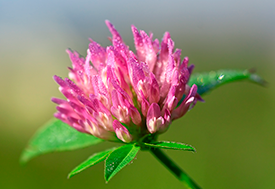 The legume family of plants including Scotch Broom, Sweet Pea and Red Clover (pictured), capture the cosmic component of nitrogen so that it can fertilize the earth. In this chemical process we see that something inherently "selfish" is brought into relationship to the earth, and this quality yields insight into how these plant essences are used as healers for those souls lacking in certain social forces. Strong alkaloids indicate a penetration of the astral element into the plant, which can be toxic for the physical body, but stimulating to the astral body. For example, we see in the Buttercup Family essences such as Buttercup, Larkspur, Columbine and Monkshood that awaken psychic forces within the soul.
The legume family of plants including Scotch Broom, Sweet Pea and Red Clover (pictured), capture the cosmic component of nitrogen so that it can fertilize the earth. In this chemical process we see that something inherently "selfish" is brought into relationship to the earth, and this quality yields insight into how these plant essences are used as healers for those souls lacking in certain social forces. Strong alkaloids indicate a penetration of the astral element into the plant, which can be toxic for the physical body, but stimulating to the astral body. For example, we see in the Buttercup Family essences such as Buttercup, Larkspur, Columbine and Monkshood that awaken psychic forces within the soul.
Potassium gives strength to the structure of plants, particularly in the stems. We see this quality in such composite flowers as Yarrow and Echinacea. Their structural integrity is a clue to the ability of the flower essences prepared from these plants to bring strength, uprightness and valor to the soul.
11. Medicinal and Herbal Uses
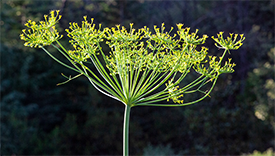 Just as the physical constituents of plants are indications of the forces and processes that work through them, so we can also learn from the physical healing properties of plants something of their more subtle effects on the soul. We can say that the soul-healing qualities of the flower essences are like a "higher octave" of the medicinal and herbal healing properties belonging to the plant.
Just as the physical constituents of plants are indications of the forces and processes that work through them, so we can also learn from the physical healing properties of plants something of their more subtle effects on the soul. We can say that the soul-healing qualities of the flower essences are like a "higher octave" of the medicinal and herbal healing properties belonging to the plant.
For example, Dill (pictured) is used as a culinary herb and a treatment for flatulence, a condition that results when we do not assimilate our physical food. The Dill flower essence addresses over-stimulation of our psyche, and the inability to assimilate the sense impressions that should be our soul nourishment.
The bark of Willow is a source of salicylic acid, the natural precursor of aspirin, and a well-known remedy for arthritic pain and rigid joints. The Willow essence of Dr. Bach is for those people whose rigidity of soul is expressed through resentment and bitterness and other hardening tendencies. This essence brings more soul flexibility and the capacity to forgive and release.
12. Lore, Mythology, Folk Wisdom, Spiritual and Ritual Qualities
In earlier epochs of human history we experienced a more intimate relationship with the natural world, and our relationship with plants was based on an instinctual soul rapport. The remnants of this unconscious plant wisdom survive in the folklore, mythology, ritual and spiritual teachings about plants. As we strive to bring a more conscious understanding of the human-plant relationship, these teachings can bring us much valuable information and inspiration.
For example, the Yarrow plant (Achillea millefolium) was named for the Greek warrior Achilles. It was also known as "Knight's millefoil" and was carried into battle not only for it's ability to stop bleeding, but also for spiritual protection. This parallels the use of the Yarrow essence for those who are overly sensitive and vulnerable and need psychic protection and soul centering.
The Iris is named for the Greek Goddess of the Rainbow, the bridge between Heaven and Earth, the meeting of Light and Dark. As such, she is the inspirer of the soul realm, and the Iris became the emblem of nobility, the representation of Heaven on Earth. We use the Iris essence to awaken creativity in the soul, and to open us to our Muse, the voice of Heavenly inspiration.
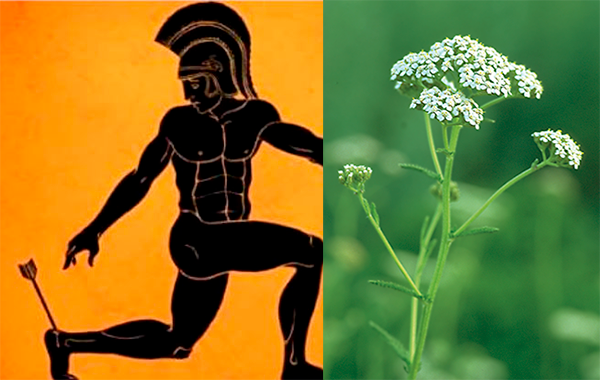
Achilles & Yarrow
The Iris is named for the Greek Goddess of the Rainbow, the bridge between Heaven and Earth, the meeting of Light and Dark. As such, she is the inspirer of the soul realm, and the Iris became the emblem of nobility, the representation of Heaven on Earth. We use the Iris essence to awaken creativity in the soul, and to open us to our Muse, the voice of Heavenly inspiration.
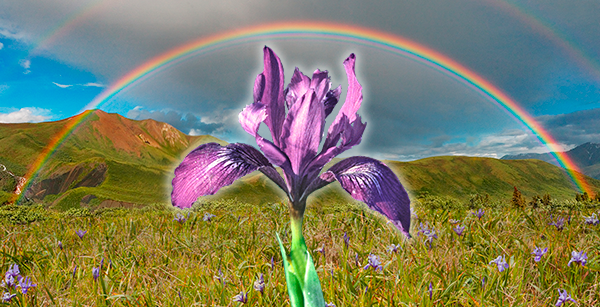 Iris
Iris
Saint John's Wort is associated with the Feast of Saint John, celebrated at the time of the summer solstice. Sprigs of the herb were traditionally gathered and placed in a cross above the entrance to the home as spiritual protection. The botanical name Hypericum is from the Greek meaning "over a spirit," connoting a quality of protection. The saying of St. John, "I must decrease that He may increase," refers to the soul's ability to digest outer light and bring it inward into the depths of the soul, just as the light itself decreases after the summer solstice until the Christmas festival of Christ's birth. Thus the St. John's Wort flower essence provides protection for those who are unable to encounter and assimilate cosmic light in the right manner, suffering from depression and other forms of psychic imbalance.
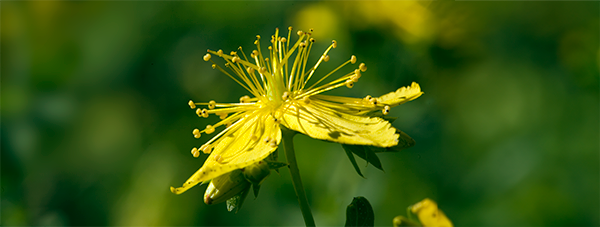
Saint John's Wort

To install this Web App in your iPhone/iPad press ![]() and then Add to Home Screen.
and then Add to Home Screen.
